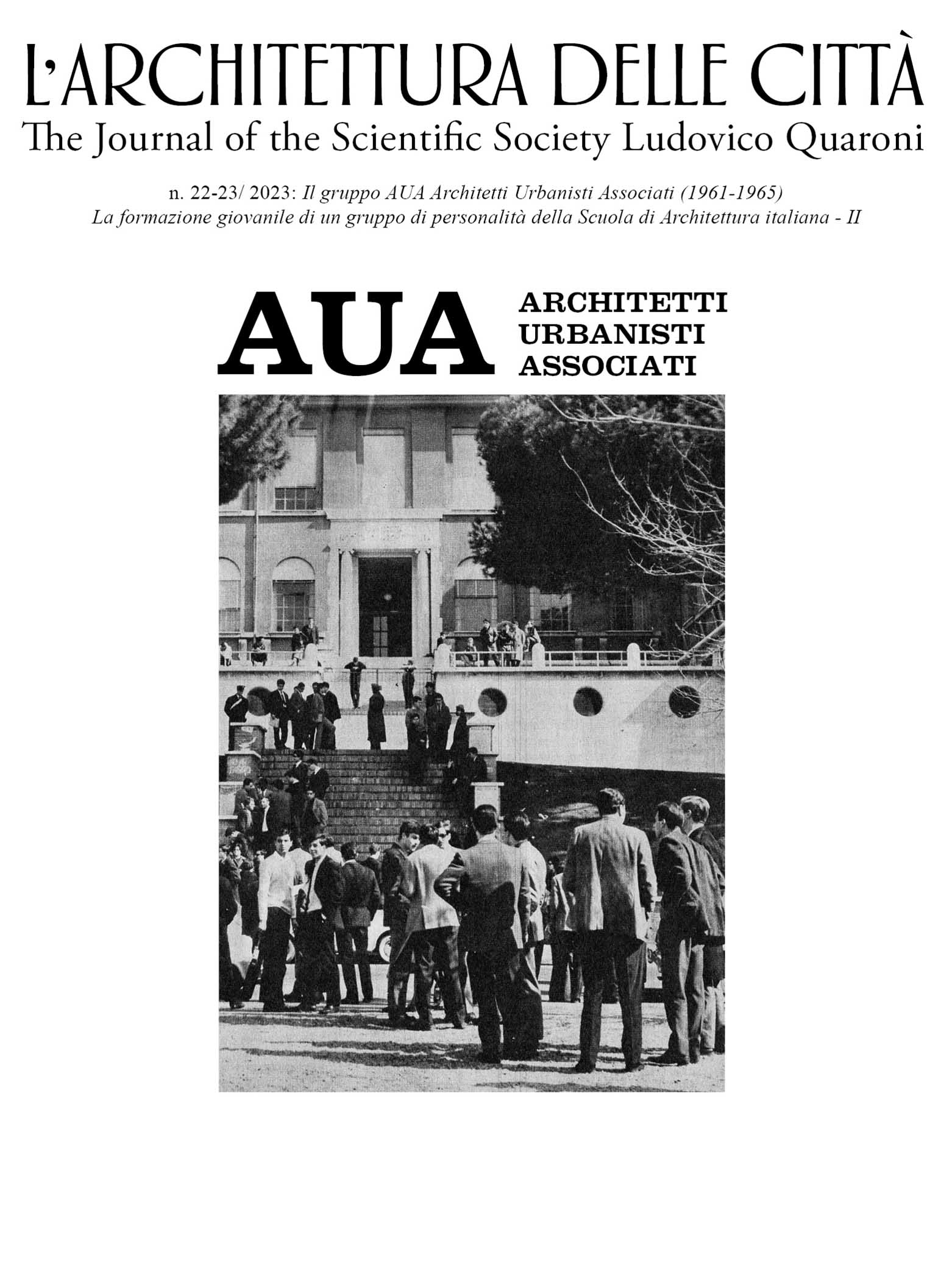The ASeA-AUA group
Abstract
The group formed by the students who were the promoters of ASeA and the founders of AUA, was among the most active promoters of the first student occupation of the Faculty of Architecture in Rome after the initial post-war years: it occurred in 1956 and certainly today it would be considered a demonstration of a “corporate” nature. In that year, the elections for the formation of the Faculty Student Council composed of three members had been won by the list of the UGI – Unione Goliardica Romana – towards which the votes of the left-wing students had also been directed, after the direct agreement between Palmiro Togliatti and the very young Marco Pannella (elected president of the UGI in 1952). After the elections, Lucio Barbera, Massimo La Perna – both members of our group – and Claudio Tombini, representative of the students of the FGCI (Italian Communist Youth Federation) in the Faculty were elected to the Faculty Student Council.
The demonstration, organized by the Student Council and which culminated with the occupation of the premises of the Faculty in Valle Giulia, involved all the other national university locations because it was aimed at contesting a national law (n. 1378, 8 December 1956) which, by reintroducing the State Exams for the practice of the profession, opened up to engineers the possibility of enrolling in the Order of Architects without allowing – in fact – reciprocity. The demonstration of a national nature did not achieve anything, but for the architecture students of Rome it was a training ground for collective action and an important experience of collaboration with students active in other Italian Faculties of Architecture. In those years in Italy the Faculties of Architecture were still those established between the two world wars at the Polytechnics of Milan and Turin, the Universities of Florence, Naples, Palermo and the IUAV of Venice, on the model of the Royal School of Architecture of Rome, founded by the group of designers and artists led by Gustavo Giovannoni and Marcello Piacentini. To give greater meaning to the demonstrations against the law establishing the State Exams, student representatives of all the other Faculties met in Rome where a joint conference was held; it was the occasion to establish political, cultural and personal relationships with peers and colleagues from other Italian cities with whom a generational network embryo was naturally formed that in the following years developed at every level with great naturalness. Despite the democratic courtesy with which this first occupation was conducted, Dean Vincenzo Fasolo assumed an authoritarian and paternalistically aggressive posture, which however allowed the rest of the Professors' Council (only seven full professors were part of it) not to expose themselves against the student initiative.
That demonstration successfully involved a large part – the most active – of the students, both male and female – very few – of the Faculty and seemed to express a concrete leadership capacity of our group. By consciously adopting the usual and anthropologically tested model of climbing to hegemony – even if only cultural – through the identification of an adversary to beat – better if institutional and ideological – our group elected itself the main protagonist of the opposition to the cultural backwardness of the Faculty – evident especially in the years of the two-year preparatory course. We founded the ASeA (Students and Architects Association) and, within it, a Freshmen Information Center, with which we addressed especially the very young with a sort of real counter-school. During the hours of official teaching breaks, we organized supplementary lessons for the first-year students to introduce them to the principles, works and ideals of the Master of Modern Architecture of the years between the two World Wars, from which, in our opinion, it was necessary to start again to design the contemporary city.
(...)


